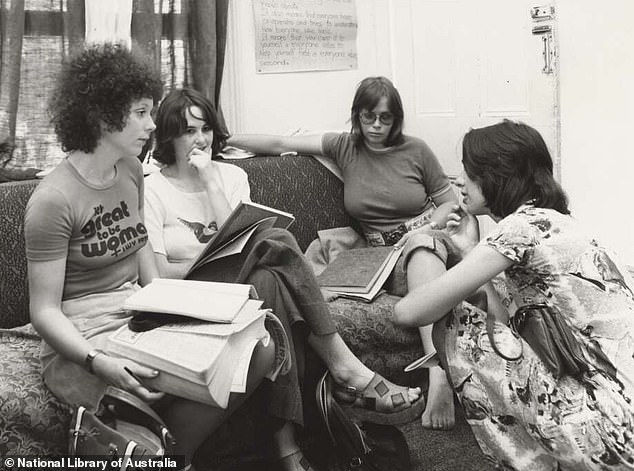
It was 1996 and Diane was just 21 when she first started working at Bonnie’s. During her time there she saw Bonnie Women’s Refuge, a small grassroots feminist collective, begin to transition into the community organisation Bonnie Support Services is today.
Lisabel Zoomed in with Diane to hear stories about her time at Bonnie’s.
Hey Diane, thanks for sitting down with me. Tell me a bit about your time at Bonnie’s and what you did there. For example, were you a social worker?
Those jobs didn’t really exist in women’s refuges back then. We were called General Support Workers or Child Support Workers. I did an Arts Degree in the 90s, and by chance picked up Women’s Studies as a major, and wanted to work in women’s services. I began at Bonnie’s just 2 days a week, then later went full-time. I was there for three years.
Back then, it was still a Collective. We had funding, and the women who founded Bonnie’s in the 1970’s were still there, working in the refuge or as members of the Management Committee. I still remember driving the bus with one of the founders, Christine Sykes, inside and I was so nervous that I drove it into the front gate. It was a minor accident, but very embarrassing! (You can read about Christine here.)

What was the bus for?
We had funding for two company cars, a station wagon, and a Toyota HiAce. We used them to transport families and their belongings to and from the refuge, to take them shopping, to Centrelink appointments or court dates, to go on excursions or run errands, whatever was required. We conducted many intake and progress “interviews” on the bus because we thought that conversations while driving can be a more natural way to learn about a person’s situation. One of the workers’ ex-husbands was a driving instructor and he taught us how to drive it so we could get our 1B licence. We all helped each other out during that time. It was very community and grassroots driven.
And still is today! How else did Bonnie’s reflect that activist grassroots energy in your time?
The 90’s was a transitional time. It was the beginning of a push towards a succession of conservative governments that resulted in many refuges were being taken over by faith-based organisations like St. Vincent de Paul. Refuges often lost their public funding altogether. We were determined to remain the secular and feminist women’s refuge we still are.
Our philosophical foundation was strong but that meant we could clash with some of the other services. For example, we allowed boys over the age of 12 to stay with us and their mum on a case-by-case basis. This was a big deal at the time and many other refuges didn’t allow it. I still remember a Samoan family, with a son who was quite big and tall and still at school. He was 14 or 15. He ended up being one of the best helpers. He looked after his siblings, helped us out sometimes and was a wonderful example to some of the other children in the refuge to look up to like a big brother. We did everything case-by-case because each client came with their own unique needs, and it was important to acknowledge that and make sure we didn’t exclude anyone unnecessarily, whilst maintaining harmony and safety in the house.
Do you have another example of the case-by-case nature of the organisation? What were some of the difficult decisions you had to make?
In the 90’s the Bosnian war was going on and the area was home to many refugees from Eastern Bloc countries like the former Yugoslavia. This one time we had a Bosnian family and a Serbian family staying with us at the same time. We had to be careful and ensure that they were both informed about each other’s presence and at first, we had to keep them separated according to their wishes. However, because Bonnie’s was such a multicultural, judgement-free, and culturally safe place, by the end of their stay these two families became quite close. They spoke the same language and had similar experiences that brought them together – it was powerful to see.
Today, Bonnie’s has around 30 staff members, how many people worked at Bonnie’s during your time?
There were about 8-10 people, sometimes more because we had a range of full-time, part-time, casuals and contractors. What made this period so special is that we had three generations of women working side by side, who were from diverse cultural backgrounds. There were the grassroots founders from the 70s who created the concept of the refuge, they were culturally Anglo-Australian. Then there were the women who started working there in the 80s, who helped to secure funding and professionalise the organisation and were culturally more diverse South American (Uruguayan and Argentine) and Vietnamese. And then, in the 90s at the start of the digital age, me and a few others increased that diversity – Maltese, Lebanese, Vietnamese, Italian.
That was the thing about Bonnie’s too – many people stayed on for a long time, some only stayed briefly, but everyone had something wonderful to contribute to the life of the place. We sometimes had generational clashes, but because at this time Bonnie’s operated as a Collective, all opinions and values were heard, and we all respected each other and tried to make decisions together. It wasn’t always amicable, there was a lot at stake, and we were witnessing some serious conflict and trauma, but our client families were always the priority, as well as our community and our own emotional and psychological wellbeing.
We practised self-care and had Professional Supervision and Team Building activities even back then, which was rare and still quite new at the time. We went to the Refuge Movement state conferences and the one I remember best was in Morpeth, run by the Aboriginal Collective refuge there. We even ran our own conference in Sydney one year. It was three days of discussion, networking, and fun. My favourite thing was that the Feminist Bookshop always had a stall at the conference.
What were some of the generational clashes?
It was the beginning of the internet age which my generation was very interested and confident in, but it was still so new. Not everyone was comfortable with using a computer yet and most of the documentation and record keeping was still being handwritten. This was beginning to change and was sometimes an uneasy transition to make.
Tell me about your first day at Bonnie’s.
At first, I thought they were having me on! I arrived and walked through the door to find all the doors and curtains drawn shut. The worker who hired me, who later became the coordinator, said to me, ‘We’re about to take this woman and her kids somewhere safe. Her husband is on his way. Here, read some of these old files and documentation, and make yourself comfortable. If he arrives, call the police. Just don’t go outside or open any doors.’ In my head I’m like, ‘This can’t be real.’ But it was!
As it turned out, the husband didn’t turn up, and the family were transferred to another refuge safely. But that was my intro to working at Bonnie’s. And my job there is still one of the most prominent in my mind to this day.
What is it about this time that makes it so?
It was amazing to work within a collectivist, feminist structure. Patriarchal structures are like pyramids. They’re hierarchical and linear, but our collective worked like a web with many different points of power and wisdom. For example, being a young person at the time, I had the power and leadership when it came to computers and the internet but when it came to life experience, I didn’t have a clue. The elder workers were the ones to look up to.
There was a lot of complex work being done on every level. I was motivated and optimistic, but probably a little naïve too. We respected each other’s differences and expertise and were all very supportive of one another. We had all experienced violence, problems with drugs and alcohol, death, mental health, and the cultural interface. Working in a Collective allowed us flexibility and fluidity in how we worked, and we collaborated and made decisions together. We all had a say, we were all equal and that included the residents of the service too. The philosophy was really one of community.
And I’m happy to say, that feeling of collectivity and community – of women working together – is still so strong at Bonnie’s today. And growing! Thank you so much for meeting with me.
Blog written from a conversation with Former Bonnie’s worker, Diane Koopman and Lisabel Link.
Images supplied by Diane Koopman and sourced from The National Library of Australia and the Bettmann Archive via The Guardian Australia.


comment closed